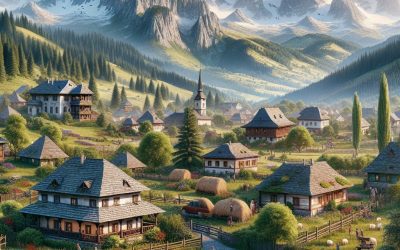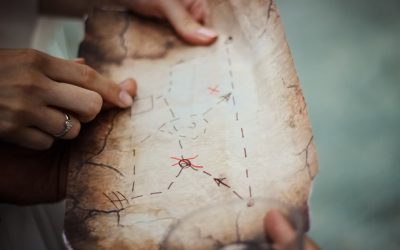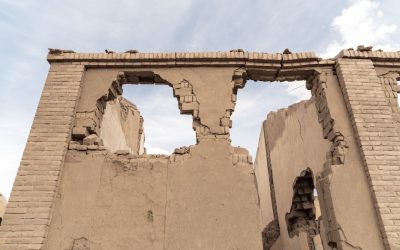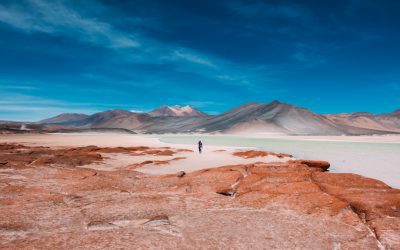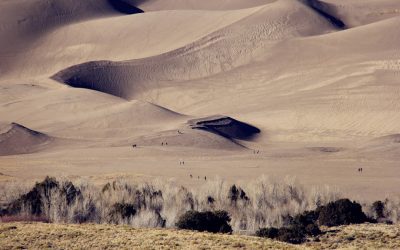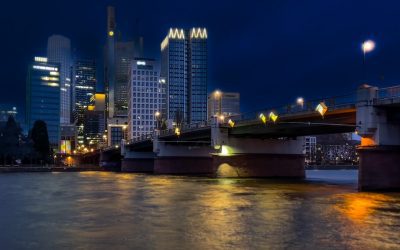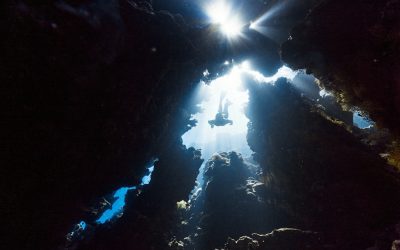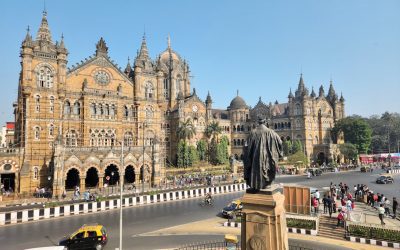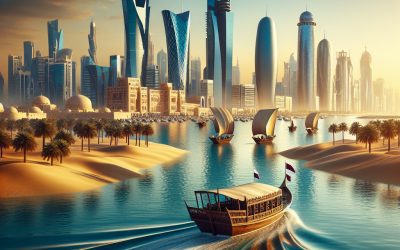World Geography
Geography is the study of the Earth’s landscapes, environments, and the relationships between people and their surroundings. It encompasses both the physical aspects of the Earth, such as its landforms, bodies of water, and climate, as well as the human aspects, including population distribution, cultures, and economies. World geography is a broad field that seeks to understand the complexities of our planet and how humans interact with it. By studying world geography, we can gain a deeper appreciation for the diversity of our planet and the interconnectedness of its various regions.
Geography is a multidisciplinary field that draws on elements of physical science, social science, and humanities. It involves the use of maps, spatial analysis, and geographic information systems (GIS) to understand the Earth’s surface and the processes that shape it. World geography also encompasses the study of human geography, which examines the ways in which people and their activities are distributed across the Earth. By understanding world geography, we can better appreciate the environmental, cultural, and economic challenges facing different regions of the world. This knowledge is crucial for addressing global issues such as climate change, resource management, and international development.
The Five Oceans and Seven Continents
The Earth’s surface is divided into five major oceans: the Pacific, Atlantic, Indian, Southern (or Antarctic), and Arctic Oceans. These vast bodies of water play a crucial role in regulating the Earth’s climate and supporting diverse marine ecosystems. The oceans also serve as important transportation routes and a source of food and other natural resources for human societies around the world.
In addition to the oceans, the Earth’s landmasses are divided into seven continents: Africa, Antarctica, Asia, Europe, North America, Australia (or Oceania), and South America. Each continent has its own unique physical and cultural characteristics, shaped by millions of years of geological processes and human history. From the deserts of Africa to the rainforests of South America, the continents offer a rich tapestry of landscapes and environments for exploration and study.
Major Mountain Ranges and Deserts
The Earth’s surface is also marked by major mountain ranges and deserts that have shaped the planet’s physical and cultural landscapes. The Himalayas, for example, are the highest mountain range in the world and are home to diverse ecosystems and cultures in countries such as India, Nepal, and Bhutan. The Andes in South America, the Rockies in North America, and the Alps in Europe are other prominent mountain ranges that have influenced human settlement patterns and economic activities.
Deserts cover about one-third of the Earth’s land surface and are characterized by low precipitation and extreme temperatures. The Sahara Desert in Africa is the largest hot desert in the world, while the Gobi Desert in Asia is one of the largest cold deserts. Deserts are not only home to unique flora and fauna but have also been important trade routes and cultural crossroads throughout history.
Climate Zones and Biomes
The Earth’s climate is influenced by a variety of factors, including latitude, altitude, ocean currents, and prevailing winds. As a result, the planet is divided into different climate zones, each with its own characteristic weather patterns and ecosystems. The equator, for example, experiences a tropical climate with high temperatures and heavy rainfall, while the polar regions have a cold and dry climate.
These climate zones give rise to different biomes, or large ecological areas characterized by distinct plant and animal communities. The tropical rainforest biome, found near the equator, is home to a diverse array of species and is vital for regulating the Earth’s climate. The grasslands biome, found in regions such as the African savannah and North American prairies, supports grazing animals and has been important for human agriculture throughout history.
Human Geography and Population Distribution
Human geography examines the ways in which people and their activities are distributed across the Earth’s surface. It encompasses topics such as population growth, migration patterns, urbanization, and cultural diversity. Understanding human geography is crucial for addressing global challenges such as poverty, inequality, and environmental degradation.
Population distribution is uneven across the world, with some regions experiencing rapid population growth while others are declining. The majority of the world’s population lives in Asia, particularly in countries such as China and India. Urban areas are also growing rapidly, with more than half of the world’s population now living in cities. This trend has significant implications for infrastructure development, resource management, and social inequality.
Historical and Cultural Geography
Historical geography examines how human activities have shaped the Earth’s landscapes over time. It explores topics such as colonialism, trade routes, and the rise and fall of empires. Cultural geography focuses on how human cultures have developed in different regions of the world and how they interact with their environments.
The Silk Road, for example, was an ancient trade route that connected China with Europe and facilitated the exchange of goods, ideas, and technologies across Eurasia. This historical trade route had a profound impact on the development of cultures and economies along its path. Similarly, cultural geographers study how different societies have adapted to their environments through practices such as agriculture, architecture, and religious beliefs.
The Importance of Geographic Knowledge
Geographic knowledge is crucial for addressing global challenges such as climate change, resource management, and international development. By understanding world geography, we can better appreciate the environmental, cultural, and economic challenges facing different regions of the world. This knowledge is crucial for addressing global issues such as climate change, resource management, and international development.
Geographic knowledge also helps us to understand our interconnectedness with other regions of the world. By studying world geography, we can gain a deeper appreciation for the diversity of our planet and the interconnectedness of its various regions. This understanding can foster a sense of global citizenship and empathy for people from different cultures and backgrounds.
In conclusion, world geography is a complex and multifaceted field that encompasses both physical and human aspects of the Earth’s landscapes. By studying world geography, we can gain a deeper appreciation for the diversity of our planet and the interconnectedness of its various regions. This knowledge is crucial for addressing global challenges such as climate change, resource management, and international development. It also helps us to understand our interconnectedness with other regions of the world and fosters a sense of global citizenship.
FAQs
What is world geography?
World geography is the study of the Earth’s landscapes, environments, and the relationships between people and their environments. It encompasses the physical features of the Earth, as well as the human activity that takes place on it.
Why is world geography important?
World geography is important because it helps us understand the world around us. It provides insights into the physical and human processes that shape our planet, and helps us make informed decisions about how to interact with our environment.
What are the main branches of world geography?
The main branches of world geography include physical geography, which focuses on the Earth’s natural features and processes, and human geography, which examines the relationships between people and their environments.
How does world geography impact our daily lives?
World geography impacts our daily lives in numerous ways, from influencing the weather and climate we experience, to shaping the availability of natural resources and influencing the distribution of populations and cultures around the world.
What are some key concepts in world geography?
Key concepts in world geography include location, place, human-environment interaction, movement, and region. These concepts help geographers understand and interpret the world around them.
Cultural or Historical Sites of Romania: Important Cultural Landmarks or Historical Sites In Romania
Romania, a country steeped in rich history and vibrant culture, offers numerous cultural and historical sites that reflect its diverse heritage. Situated in Eastern Europe, Romania is a land where ancient traditions intertwine with modern influences, creating a unique tapestry that attracts visitors from around the world. From the Carpathian Mountains to the Danube Delta, the landscape is dotted with architectural marvels, ancient ruins and picturesque villages that illustrate the story of a nation shaped by centuries of tumultuous events and cultural exchanges. The country’s historical sites are not merely relics of the past; they are living testaments to the resilience and creativity of the Romanian people. As one traverses this captivating land, one cannot help but be drawn to its myriad cultural treasures. Each site offers insight into Romania’s complex history, showcasing influences from the Roman Empire, the Ottoman Empire and various European powers that have left their mark on the nation. The rich folklore and traditions that permeate Romanian culture further enhance the appeal of its historical sites, inviting exploration and discovery. Whether one is wandering through medieval towns, admiring intricate frescoes in monasteries or observing grand palaces, Romania’s cultural and historical sites provide a remarkable journey through time, revealing the essence of a nation that has endured and thrived through adversity. Summary Romania is home to a wealth of cultural and historical sites, each with its own unique story and significance. Bran Castle, often associated with the legend of Dracula, is a must-visit for those interested in the mysterious and mythical side of Romania’s history. The Painted Monasteries of Bucovina showcase stunning frescoes that depict religious...
Population Density of Romania
Romania, a country steeped in history and cultural diversity, presents a fascinating case study when it comes to population density. As of the latest estimates, Romania‘s population stands at approximately 19 million, spread across a land area of about 238,397 square kilometres. This results in a population density of around 80 people per square kilometre, which is relatively moderate compared to other European nations. However, this figure belies the complexities of demographic distribution within the country. The population density is not uniform; it varies significantly from one region to another, influenced by a myriad of factors including geography, economic opportunities, and historical migration patterns. Understanding these nuances is essential for grasping the broader socio-economic landscape of Romania. The implications of population density extend beyond mere numbers; they shape the very fabric of Romanian society. High-density areas often experience a concentration of resources, services, and infrastructure, whilst sparsely populated regions may struggle with access to basic amenities. This uneven distribution can lead to significant disparities in quality of life, economic development, and social cohesion. As Romania continues to evolve in the wake of globalisation and European integration, examining its population density becomes crucial for policymakers and citizens alike. It serves as a lens through which one can assess the challenges and opportunities that lie ahead for this vibrant nation. Summary Romania has a population density of 84 people per square kilometre, making it one of the least densely populated countries in Europe. Factors affecting population density in Romania include historical migration patterns, economic opportunities, and natural geographical barriers. The urban population in Romania is increasing, leading to a higher population...
Romania
Romania (România) Capital: Bucharest Population (Estimated July 2012): 21,848,504 Area: 238,391km2 or 92,043mi2 Currency: Leu (Plural Lei) Official Language: Romanian Political Information: Presidential Republic Official Religion: No Official Religion(approximately 86.8% of the population are Eastern Orthodox, 7.5% are Protestant, 4.7% are Roman Catholic, 0.9% have other or unspecified beliefs and 0.1% have no religious beliefs). Highest Mountain: Moldoveanu at 2,544 m or 8,346ft GDP Official Exchange Rate (OER is more precise at gauging a country’s economic power) (Estimated 2011): $185.3 billion (US$) or (GBP) GDP (OER) Per Capita (per member of the population estimated 2011): (US$) or (GBP) GDP Purchasing Power Parity (PPP is good for gauging living conditions and the use of resources but is not as accurate as OER. This data has been calculated based on the sum value of all goods and services produced in the country valued at prices prevailing in the United States) (Estimated 2011): $263.9 billion (US$) or (GBP) GDP (PPP) Per Capita (per member of the population estimated 2011): $12,300 (US$) or (GBP) Time Zone (GMT/UTC): +2:00 Wildlife: Counties/Provinces/States: 41 counties (judete, singular – judet) and 1 municipality* (municipiu); Alba, Arad, Arges, Bacau, Bihor, Bistrita-Nasaud, Botosani, Braila, Brasov, Bucuresti (Bucharest)*, Buzau, Calarasi, Caras-Severin, Cluj, Constanta, Covasna, Dimbovita, Dolj, Galati, Gorj, Giurgiu, Harghita, Hunedoara, Ialomita, Iasi, Ilfov, Maramures, Mehedinti, Mures, Neamt, Olt, Prahova, Salaj, Satu Mare, Sibiu, Suceava, Teleorman, Timis, Tulcea, Vaslui, Vilcea, Vrancea Leaders: President Traian Băsescu with Prime Minister: Mihai Răzvan Ungureanu. Additional: Proclaimed independence from the Ottoman Empire on the 9th of May 1877 which was recognised by the Treaty of Berlin on the 13th of July 1878. Sources: CIA World Fact Book, Encyclopaedia Britannica. Romania...
Political Boundaries of Qatar: Provinces, Districts, or Historical Boundaries.
Qatar, a small peninsula in the Arabian Gulf, is a sovereign state situated in the Middle East. The political boundaries of Qatar delineate its territorial limits and jurisdiction, both domestically and internationally. The nation shares a land border with Saudi Arabia to the south, whilst the remainder of its territory is encompassed by the Gulf waters. Qatar’s political boundaries are crucial for the governance and administration of the country, as they determine the extent of its sovereignty and influence. Understanding these boundaries is essential for comprehending Qatar’s geopolitical position and the dynamics of its relationships with neighbouring states and the international community. The political boundaries of Qatar are defined not only by its physical geography but also by its legal and administrative divisions. These boundaries are delineated by laws, treaties and agreements that Qatar has entered into with other states and international organisations. Qatar’s political boundaries play a significant role in shaping its domestic policies, economic activities and foreign relations. As such, they are a fundamental aspect of Qatar’s identity and influence in the region and beyond. Summary Qatar’s political boundaries have evolved over time, shaping the country’s governance and administration. The provinces and districts of Qatar play a significant role in the country’s political structure and local governance. Historical boundaries of Qatar have been influenced by various factors, including colonialism and regional geopolitics. Changes in Qatar’s political boundaries over time have been driven by internal and external factors, such as territorial disputes and diplomatic negotiations. The impact of political boundaries on Qatar’s governance is evident in the distribution of resources, representation, and decision-making processes. Provinces and Districts of...
Natural Resources of Qatar: Where Natural Resources are Located in Qatar
Qatar, a small nation situated on the north-eastern coast of the Arabian Peninsula, possesses substantial natural resources that have significantly contributed to its economic development. Despite its diminutive size, Qatar boasts considerable oil and gas reserves, water resources, mining and quarrying materials, agricultural resources, and renewable energy sources. These assets have been instrumental in driving the country’s rapid economic growth over recent decades. However, the sustainable utilisation and conservation of these natural resources are crucial for Qatar’s future economic and environmental well-being. The exploitation of Qatar’s natural resources has generated substantial revenue, which has been invested in infrastructure development, education, healthcare and other sectors. Nonetheless, the country’s heavy reliance on finite resources presents a challenge for long-term sustainability. Consequently, it is imperative for Qatar to prioritise conservation and sustainable use of its natural resources to ensure balanced and sustainable development for future generations. Summary Qatar is rich in natural resources, including oil, gas, water, minerals, and renewable energy sources. The country’s oil and gas reserves are among the largest in the world, making it a major player in the global energy market. Despite its arid climate, Qatar has invested in desalination technology to meet its water needs, making it a leader in water resource management. Qatar’s mining and quarrying industry focuses on the extraction of limestone, silica sand, and gypsum for construction and industrial purposes. The agricultural sector in Qatar is supported by advanced irrigation techniques and technology to overcome the challenges of limited arable land and water scarcity. Qatar is investing in renewable energy sources such as solar and wind power to diversify its energy mix and reduce...
Climate Zones of Qatar: Different Climate Regions Of Qatar
Qatar, a small peninsula in the Arabian Gulf, is renowned for its extreme climatic conditions. The country is divided into several distinct climate zones, each with its own unique characteristics and challenges. These climate zones include the coastal region, desert region, semi-arid region and mountain region. Each of these zones experiences different levels of temperature, humidity and precipitation, making Qatar a diverse and dynamic environment. Understanding the intricacies of these climate zones is crucial for both residents and policymakers to effectively manage and adapt to the changing climate conditions in the region. Qatar’s climate is largely influenced by its geographical location, with the Arabian Gulf to the west and the vast Arabian Desert to the south. The country experiences long, hot summers and short, mild winters, with temperatures often exceeding 40°C during the summer months. The coastal region benefits from the moderating effects of the sea, whilst the desert region is characterised by extreme heat and aridity. The semi-arid region experiences slightly more moderate temperatures and lower levels of precipitation, whilst the mountain region offers cooler temperatures and higher levels of rainfall. Understanding the unique characteristics of each climate zone is essential for developing effective strategies to mitigate the impact of climate change and ensure the sustainability of Qatar’s natural resources. Summary Qatar has four main climate zones: coastal, desert, semi-arid, and mountain. The coastal climate region experiences hot and humid weather with mild winters and high precipitation. The desert climate region is characterized by extremely hot and dry weather with minimal rainfall. The semi-arid climate region has hot summers and mild winters with low precipitation. The mountain climate...
Terrain and Topography of Qatar: mountains, valleys, and plains.
Qatar, a small peninsula in the Persian Gulf, is characterised by its distinctive and varied terrain and topography. The nation is predominantly flat and arid, with extensive expanses of desert and sand dunes. However, it also features coastal valleys and wadis, as well as the Jebel Dukhan mountain range in the west. The terrain and topography of Qatar exert a significant influence on the country’s climate, environment and overall development. This article shall examine the various aspects of Qatar’s terrain and topography, from its flat plains to its mountainous regions, and analyse the challenges and opportunities they present for the future. Summary Qatar’s terrain is characterized by flat and arid plains, coastal valleys and wadis, sand dunes and desert terrain, and the Jebel Dukhan mountain range. The flat and arid plains of Qatar dominate much of the country’s landscape, making it ideal for oil and gas exploration and extraction. Coastal valleys and wadis in Qatar provide important habitats for wildlife and serve as important water sources for the country. The sand dunes and desert terrain of Qatar are popular tourist attractions and offer unique opportunities for desert adventures. The Jebel Dukhan mountain range is the highest point in Qatar and plays a significant role in influencing the country’s climate and environment. The Flat and Arid Plains of Qatar The majority of Qatar’s terrain is characterized by flat and arid plains, with little to no natural vegetation. The landscape is dominated by vast expanses of sand and gravel, with occasional patches of salt flats and sabkhas. The flat plains of Qatar are a result of the country’s geological history, which...
Population Density of Qatar
Qatar, a small peninsula in the Arabian Gulf, is renowned for its high population density. With a land area of merely 11,586 square kilometres, Qatar ranks among the most densely populated countries globally. The population density of Qatar is estimated at approximately 244 people per square kilometre, placing it amongst the highest worldwide. The rapid population growth in recent years has resulted in an increased population density, presenting various challenges for the nation. It is crucial to comprehend the factors contributing to this high population density and its impact on the country’s infrastructure to address these challenges and plan for sustainable development. Qatar’s population density is primarily concentrated in urban areas such as Doha, the capital city, and its surrounding metropolitan regions. The influx of expatriate workers, drawn by the country’s thriving economy and employment prospects, has significantly contributed to the high population density. Moreover, the natural growth of the Qatari population has also played a role in increasing the population density. Consequently, Qatar faces unique challenges in managing its limited land resources and providing adequate infrastructure and services to support its growing population. Understanding the factors contributing to Qatar’s high population density is essential for developing effective strategies to manage and sustainably accommodate the expanding population. Summary Qatar has one of the highest population densities in the world, with a rapidly growing population and limited land area. Factors contributing to Qatar’s high population density include rapid urbanization, influx of expatriate workers, and high birth rates. High population density in Qatar has put a strain on infrastructure, leading to challenges in providing adequate housing, healthcare, and transportation. Challenges faced...
History of Qatar
Qatar boasts a rich and diverse history dating back to antiquity. The earliest known inhabitants of the region were Bedouin tribes who led a nomadic lifestyle, herding camels and engaging in trade across the Arabian Peninsula. The area now known as Qatar was also part of the ancient civilisations of Mesopotamia and the Indus Valley, serving as an important trading hub for the ancient Sumerians, Babylonians, and Assyrians. In the 7th century, Qatar came under the influence of Islam and became part of the Islamic Caliphate. The region was subsequently ruled by various Islamic dynasties, including the Umayyads, Abbasids, and Ottomans. Qatar’s strategic location along the Arabian Gulf rendered it an important trading post, renowned for its pearl diving and fishing industries. The Al Thani family, who continue to rule Qatar to this day, emerged as a prominent political force in the 18th century, eventually establishing Qatar as a unified and independent state. Summary Qatar’s early history dates back to the 4th century, with evidence of human habitation and trade activities. Ottoman and British influence in Qatar led to the signing of several treaties, ultimately resulting in Qatar becoming a British protectorate in the early 20th century. The discovery of oil in the 1940s transformed Qatar’s economy and paved the way for its independence from British rule in 1971. Modernization and development efforts have propelled Qatar into a global player, with significant investments in infrastructure, education, and healthcare. Qatar plays a key role in the Gulf Cooperation Council, working with neighbouring countries on issues such as security, trade, and economic cooperation. Ottoman and British Influence The Discovery of Oil...
Cultural or Historical Sites of Qatar: Important Cultural Landmarks or Historical Sites In Qatar
The Pearl-Qatar is an artificial island situated in Doha, Qatar‘s capital city. It stands as a representation of Qatar’s rich history and culture, having been constructed on the site of a former pearl diving and trading centre. The island serves as a testament to Qatar’s profound connection to the sea and its historical dependence on pearl diving as a significant source of income. The Pearl-Qatar is a modern architectural achievement that pays tribute to the country’s past, featuring opulent residential and commercial developments, along with impressive marinas and promenades. The island’s architecture and design draw inspiration from traditional Qatari and Arabian influences, seamlessly blending historical elements with contemporary aesthetics to create a distinctive and lively community. The Pearl-Qatar not only symbolises Qatar’s rich history and culture but also demonstrates the country’s vision for the future. It exemplifies Qatar’s dedication to sustainable development and urban planning, with its emphasis on establishing a vibrant and inclusive community that honours the country’s heritage whilst embracing modernity. The island is home to a diverse population, with residents from various parts of the world coming together to form a dynamic and cosmopolitan society. The Pearl-Qatar embodies Qatar’s past, present, and future, standing as a prime example of the country’s ability to preserve its heritage whilst embracing progress and innovation. Summary The Pearl-Qatar is a symbol of Qatar’s rich history and culture, showcasing the country’s modern development while preserving its heritage. Al Zubarah Fort plays a crucial role in preserving Qatar’s heritage and history, offering visitors a glimpse into the country’s past. The Museum of Islamic Art is a testament to Qatar’s artistic and cultural...
Qatar
Qatar (Dawlat Qaṭar (State of Qatar)) Capital: Doha Population (Estimated July 2012): 1,951,591 Area: 11,571km2 or 4,468mi2 Currency: Qatari Riyal (QR) Official Language: Arabic Political Information: Constitutional Emirate Official Religion: Islam(approximately 77.5% of the population are Muslim, 8.5% are Christian and 14% have other religious beliefs) Highest Point: Qurayn Abu al Bawl (Tuwayyir Al Hamir) at 103m or 338ft GDP Official Exchange Rate (OER is more precise at gauging a country’s economic power) (Estimated 2011): $173.2 billion (US$) or (GBP) GDP (OER) Per Capita (per member of the population estimated 2011): (US$) or (GBP) GDP Purchasing Power Parity (PPP is good for gauging living conditions and the use of resources but is not as accurate as OER. This data has been calculated based on the sum value of all goods and services produced in the country valued at prices prevailing in the United States) (Estimated 2011): $181.7 billion (US$) or (GBP) GDP (PPP) Per Capita (per member of the population estimated 2011): $102,700 (US$) or (GBP) Time Zone (GMT/UTC): +3:00 Wildlife: Counties/Provinces/States: 7 municipalities (Baladiyat, singular – baladiyah); Ad Dawhah, Al Khawr wa adh Dhakhirah, Al Wakrah, Ar Rayyan, Ash Shamal, Az Za’ayin, Umm Salal Leaders: Emir Sheikh Hamad ibn Khalifah Al Thani assisted by Prime Minister Sheikh Hamad ibn Jasim ibn Jabr Al Thani. Additional: Gained independence from the U.K. on the 3rd of September 1971. Sources: CIA World Fact Book, Encyclopaedia Britannica. Qatar Qatar, officially known as the State of Qatar, is a sovereign country situated in Western Asia. It is located on the north-eastern coast of the Arabian Peninsula and shares its sole land border with Saudi Arabia to the south....
Fun and Unique Geography Topics
The Earth harbours numerous extraordinary and captivating landforms that have been sculpted by natural forces over millions of years. One of the most remarkable is the Salar de Uyuni in Bolivia, the world’s largest salt flat. This otherworldly landscape spans over 10,000 square kilometres and comprises a thick salt crust covering a pool of brine. During the rainy season, the flat transforms into an enormous mirror, reflecting the sky and producing a striking visual effect. Another peculiar landform is the Giant’s Causeway in Northern Ireland, consisting of thousands of interlocking basalt columns formed by volcanic activity more than 50 million years ago. The columns are predominantly hexagonal in shape and create a surreal and unearthly landscape that has enthralled visitors for centuries. The Wave in Arizona is yet another extraordinary landform, featuring undulating, swirling rock formations that appear alien in nature. This sandstone rock formation has been eroded by wind and water over millions of years, resulting in a unique and mesmerising landscape. Summary The World’s Strangest Landforms: Landforms such as the Giant’s Causeway and the Salar de Uyuni showcase the incredible diversity of the Earth’s natural formations. Unusual Geographic Phenomena: From the mysterious moving rocks of Death Valley to the stunning light pillars in cold climates, the world is full of fascinating and unusual geographic phenomena. Quirky Geographic Facts: Did you know that the world’s largest desert is actually Antarctica? Or that the Great Blue Hole in Belize is a giant underwater sinkhole? Weird and Wonderful Natural Wonders: The unique landscapes of places like the Chocolate Hills in the Philippines and the Stone Forest in China are truly...


